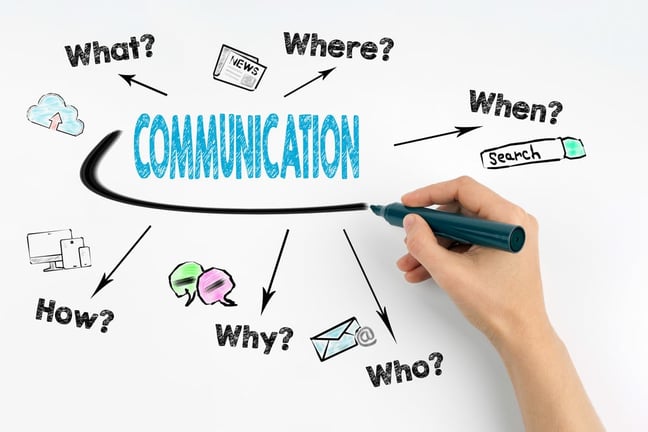As a business, having strong internal communications is essential to your success. It’s the key to keeping your team productive and engaged, and it helps create an environment of trust and collaboration. However improving your internal communications can often be a challenge.
It may feel like you’re throwing a lot of time, energy, and resources into something that may not be yielding the results you need. That’s why it’s important to have a comprehensive methodology for improving your internal communications.
10 Steps to Elevate Your Organization's Internal Communications
We’re here to share 10 ways you can improve your internal communications and make your business more successful.
1. Set Clear Expectations
The first step to improving your internal communications is to make sure everyone on your team knows what’s expected from them. Set clear expectations for how each team member should communicate, and make sure everyone is on the same page. This will help ensure that everyone is communicating effectively and that everyone is on the same page.
2. Establish Regular Communication Channels
Communication should be regular and consistent. Establish regular communication channels so that everyone knows when and how to communicate. The most popular internal communication channels include:
-
Email - provides an easy and convenient way to send messages to multiple people asynchronously.
-
Instant Messaging - provides a convenient platform for both formal and informal communication between staff members, allowing for quick and easy one-on-one and group conversations.
-
Staff Publications - provide a centralized source of information and team engagement, allowing for more efficient dissemination of news and information.
-
Video Conferencing - allows for face-to-face interaction between staff members, maximizing efficiency and saving time and resources.
-
Intranet Portal - is a platform designed to facilitate communication and collaboration within an organization by providing easy access to shared documents and resources.
3. Embrace Technology For Enhanced Communication
Technology can be a great tool for improving internal communications. There are a wide variety of tools available to help streamline communication, such as instant messaging, digital publishing, video conferencing, and intranet portals. Here are some of the most popular tools from each category:
Instant messaging
-
Microsoft Teams
-
Google Chat
Digital publishing
-
Foleon
-
Turtl
Video conferencing
Intranet portals
4. Use Visual Communication
Visual communication is a powerful way to present information and get your point across quickly. Use visuals such as infographics, diagrams, videos and slideshows to make your communications more effective and engaging.
5. Listen and Respond
It’s important to make sure everyone on your team feels heard and respected. Encourage your team members to share their ideas and opinions, and make sure everyone’s voice is heard.
6. Encourage Open Dialogue
Open dialogue and honest feedback are essential for improving internal communications. Encourage your team to discuss ideas openly and provide honest feedback. This could include surveys, interviews, or focus groups where team members can share their thoughts and opinions. This will help foster an environment of trust and collaboration.
7. Promote Transparency
Transparency is essential for successful internal communication. Make sure that everyone is aware of the company’s goals, strategies, and decisions. Make sure that all relevant information is shared with the team in a timely manner.
8. Utilize Data
When it comes to improving internal communications, data can be incredibly useful. Collect data on how your team is communicating, and use it to make informed decisions about what changes you should make.
9. Facilitate Training
Invest in training and development to ensure that everyone on your team is equipped with the skills they need to communicate effectively. This could include workshops, webinars, or coaching sessions.
10. Evaluate Progress
Finally, make sure you’re regularly evaluating and assessing your internal communications. Track your progress and make adjustments accordingly.
These 10 steps are the key to improving your internal communications and making your business more successful. By setting clear expectations, embracing technology, and utilizing data, you can create a strong foundation for effective internal communications.
Enhancing Internal Communications with Joomag
At Joomag, we understand how important internal communications are for businesses. That’s why we offer a comprehensive suite of tools for effective employee communications. Joomag makes it easy to create employee newsletters and staff magazines, and then distribute them to the workforce, whether back office or front line, anywhere in the world. It also provides the ability to measure the efficiency of communication and get granular analytics. This helps managers and employers ensure that their employees are getting the right messages and that their communications are effective.











